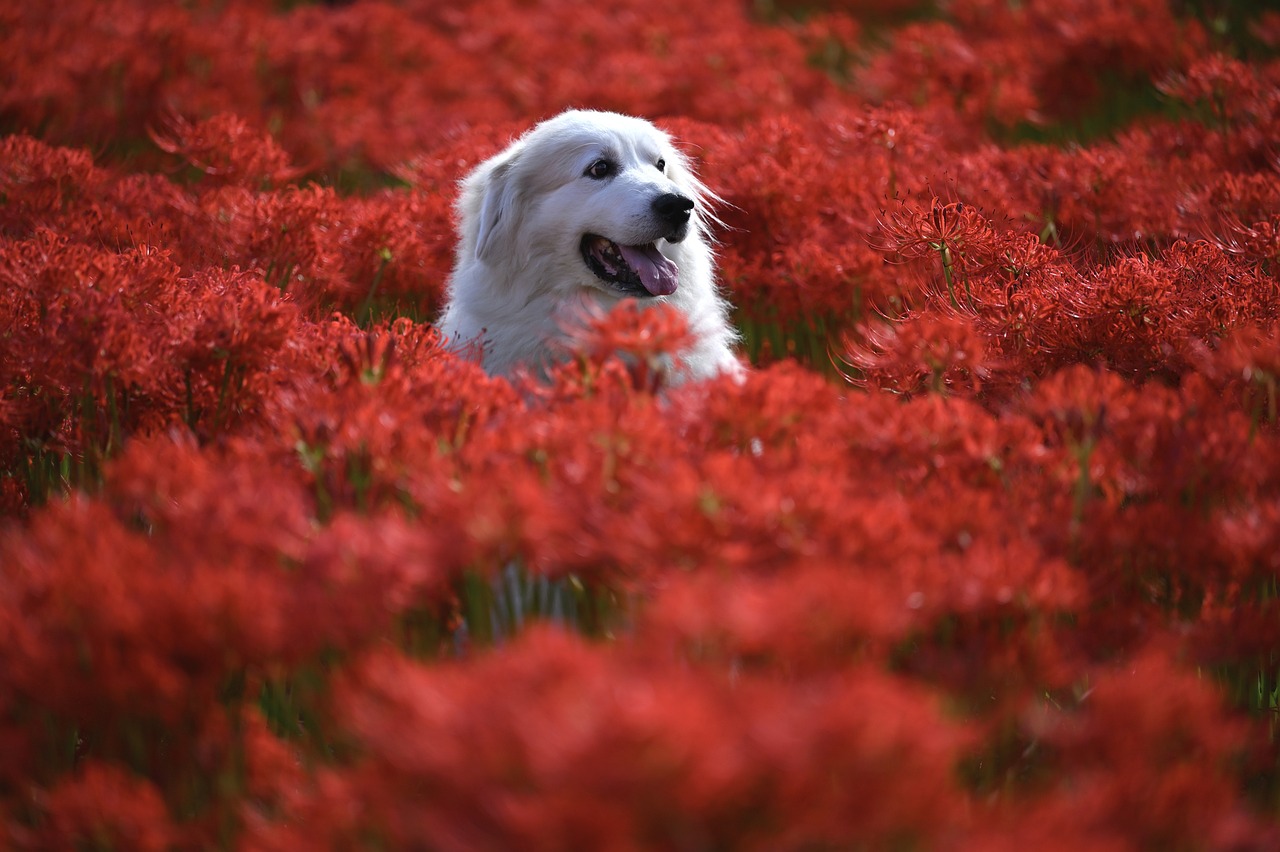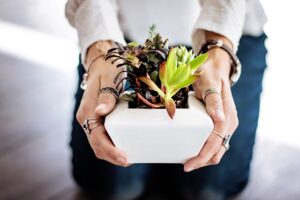What Plants Are Poisonous to Dogs. If you’re a dog owner, it’s important to be aware of the plants that could be harmful to your furry friend. Dogs are curious creatures and love to explore their surroundings, including your garden and houseplants. Unfortunately, some plants can be toxic to dogs and cause a range of health issues, from mild gastrointestinal discomfort to severe poisoning. By staying informed about the plants that can harm your dog, you can take steps to prevent accidents and create a safe environment that promotes their wellbeing.
Key Takeaways:
- Knowing which plants are poisonous to dogs can help you prevent accidental ingestion.
- Common plants toxic to dogs include lilies, tulips, azaleas, and daffodils.
- If your dog displays symptoms of plant poisoning, seek veterinary care immediately.
- There are many pet-safe alternatives to common toxic plants that you can choose for your garden.
- Training your dog to avoid harmful plants can reduce the risk of accidents.
Identifying Common Toxic Plants for Dogs
As a responsible dog owner, it’s crucial to know which plants are toxic to your furry friend. Here are some common plants that can be harmful:
| Plant Name | Toxicity Level |
|---|---|
| Aloe Vera | Moderately Toxic |
| Amaryllis | Highly Toxic |
| Azalea | Highly Toxic |
| Begonia | Moderately Toxic |
| Chrysanthemum | Moderately Toxic |
| Dieffenbachia | Highly Toxic |
| Dumb Cane | Highly Toxic |
| English Ivy | Moderately Toxic |
| Hosta | Moderately Toxic |
| Lilies | Highly Toxic |
| Marijuana | Highly Toxic |
| Philodendron | Moderately Toxic |
| Poinsettia | Mildly Toxic |
| Tulips | Moderately Toxic |
| Yew | Highly Toxic |
While this list is not exhaustive, it covers some of the most common plants that can be harmful to dogs. It’s important to keep an eye out for these plants around your home, and take extra precautions if they are present.
Symptoms of Plant Poisoning in Dogs
Recognizing the symptoms of plant poisoning in dogs is critical for prompt treatment. The symptoms of plant poisoning can vary depending on the type of plant and the amount ingested, but some common signs to look out for include:
- Vomiting
- Diarrhea
- Excessive drooling
- Abdominal pain
- Lack of appetite
- Lethargy
- Difficulty breathing
- Irregular heartbeat
- Tremors or seizures
If your dog exhibits any of these symptoms and you suspect they have ingested a toxic plant, seek veterinary care immediately. Time is of the essence, and rapid treatment can save your pet’s life.
Tip: Keep a list of toxic plants on hand and keep your veterinarian’s contact information easily accessible in case of emergencies.
Common Garden and Landscaping Plants Toxic to Dogs
Many beautiful garden and landscaping plants can be dangerous and even lethal to dogs if ingested. Here are some of the most common plants toxic to dogs that you should avoid:
| Plant Name | Common Symptoms of Toxicity |
|---|---|
| Azalea | Vomiting, diarrhea, drooling, lethargy |
| Daffodil | Vomiting, diarrhea, abdominal pain, convulsions, tremors |
| Hydrangea | Vomiting, diarrhea, depression, lethargy |
| Oleander | Vomiting, diarrhea, irregular heartbeat, seizures, coma, death |
| Sago Palm | Vomiting, diarrhea, liver failure, seizures, coma, death |
| Tulip | Vomiting, diarrhea, hypersalivation, depression, tremors |
However, it is important to note that this list is not exhaustive and many other common plants can also be dangerous to dogs. Always do your research to ensure you avoid any other potentially harmful plants.
If you want to maintain a beautiful garden or landscape and keep your furry friend safe, consider opting for pet-safe alternatives such as:
- Roses
- Sunflowers
- Marigolds
- Zinnias
- Phlox
- Impatiens
These plants are not only safe for your dog, but they can also provide a beautiful and colorful addition to your outdoor space.
Common Indoor Plants Toxic to Dogs
While indoor plants can brighten up your home and purify the air, some of them can also pose a threat to your dog’s health. It is important to be aware of which common indoor plants are toxic to dogs so that you can take steps to keep your furry friend safe.
Here are some of the most common indoor plants that are toxic to dogs:
| Plant Name | Toxicity Level |
|---|---|
| Dieffenbachia | High |
| Pothos | Low |
| Philodendron | Low |
| Snake Plant | Low |
| ZZ Plant | Low |
If you have any of these plants in your home, make sure they are placed out of reach of your dog. Alternatively, consider replacing them with pet-safe indoor plants.
Some examples of dog-safe indoor plants include:
- Spider Plant
- Boston Fern
- Money Tree
- African Violet
- Areca Palm
By choosing these pet-safe plants, you can enhance your indoor space while keeping your dog safe and healthy.
Tips for Creating a Dog-Safe Garden
Creating a dog-safe garden is an important part of ensuring your furry friend’s health and happiness. By eliminating dangerous plants and incorporating pet-safe alternatives, you can create a beautiful and safe outdoor environment for your dog to play in. Here are some tips to get you started:
Research Plant Toxicity
Before selecting plants for your garden, research which plants are toxic to dogs. Common plants that are toxic to dogs include azaleas, daffodils, lilies, tulips, and wisteria. Once you have identified these plants, eliminate them from your garden and consider using pet-safe alternatives instead.
Use Raised Beds
Raised beds can help keep your dog out of your garden and away from any potentially dangerous plants. Aim for a height of at least 2-3 feet to keep your furry friend from jumping or reaching into the beds. Alternatively, you can fence off your garden to keep your dog out entirely.
Select Pet-Safe Alternatives
There are plenty of pet-safe alternatives to common toxic plants. For example, instead of planting lilies, consider planting petunias or snapdragons. Instead of azaleas, plant dogwood trees or rhododendrons. Do your research to find alternative plants that will not pose a risk to your dog.
Supervise Your Dog’s Outdoor Time
While it may not be possible to keep your dog out of your garden entirely, you can supervise their time outside to ensure they stay away from any harmful plants. Keep an eye on your dog and intervene if they try to dig up a plant or chew on any foliage.
Provide Plenty of Toys and Activities
Finally, provide your dog with plenty of toys and activities to keep them occupied while outside. A bored dog may be more likely to get into trouble and accidentally ingest a harmful plant. Provide toys, games, and plenty of opportunities for exercise to keep your dog entertained and safe.
What to Do If Your Dog Consumes a Toxic Plant
If you suspect that your dog has consumed a toxic plant, it is essential to act quickly. Time is of the essence when it comes to treating plant poisoning in dogs. Here are the steps you should take:
- Identify the plant. Try to determine which plant your dog has consumed. If you are not sure, take a sample of the plant with you to the vet.
- Contact your veterinarian. Call your vet right away and let them know what has happened. They will give you further instructions on what to do next.
- Induce vomiting. In some cases, your vet may instruct you to induce vomiting in your dog to expel the plant from their system. However, this should only be done under the guidance of a veterinarian.
- Seek veterinary care. It is important to seek veterinary care as soon as possible if your dog has ingested a toxic plant. Your vet may recommend hospitalizing your dog and administering IV fluids and medications to treat symptoms.
Remember, prevention is key when it comes to protecting your dog from toxic plants. By being aware of which plants are toxic to dogs and taking the necessary precautions, you can avoid the potentially life-threatening consequences of plant poisoning in dogs.
Pet-Safe Alternatives to Common Toxic Plants
Just because a plant is toxic to dogs doesn’t mean you have to sacrifice a beautiful garden. There are many pet-safe alternatives to common toxic plants that can still brighten up your outdoor space:
| Common Toxic Plant | Pet-Safe Alternative |
|---|---|
| Azalea | Caladium |
| Daffodil | Hyacinth |
| Lily of the Valley | Phlox |
| Tulip | Irises |
These are just a few examples of dog-safe plants that can add color and texture to your garden. Do your research to find other options that suit your style and climate.
Remember, while pet-safe alternatives can reduce the risk of plant poisoning, it’s still important to keep a watchful eye on your dog while they’re outside. Even non-toxic plants can present a hazard if your dog digs them up or chews on them excessively.
In addition to selecting pet-safe plants, you can also create a physical barrier around potentially dangerous vegetation. Fencing off areas of your garden or using raised planters can help keep your dog at a safe distance.
By making smart choices about the plants in your garden, you can create a beautiful outdoor space that is also safe for your furry friend.
Teaching Your Dog to Avoid Toxic Plants
Training your furry friend to avoid toxic plants is an effective way to prevent accidents and keep them safe. Follow these tips to teach your dog to steer clear of dangerous plants:
- Positive reinforcement: Use treats or toys to reward your dog for avoiding toxic plants.
- Vocal commands: Teach your dog to respond to verbal commands like “leave it” or “no.”
- Physical barriers: Use fences or other barriers to keep your dog away from areas with toxic plants.
It is important to supervise your dog while they are in the garden to ensure they do not consume any harmful plants. Consistent training and reinforcement will help your dog learn to avoid toxic plants and keep them safe.
Creating a Pet-Friendly Indoor Environment
While it’s important to be aware of outdoor plants that can harm your dog, it’s also crucial to consider the plants you bring into your home. Luckily, there are plenty of dog-safe indoor plants that can make your space feel more inviting.
Some of the most popular pet-safe houseplants include:
- Spider plant
- Boston fern
- African violet
- Money tree
- Peperomia
Not only are these plants safe for your furry friend to be around, but they also offer numerous health benefits. For instance, spider plants help to purify indoor air by removing toxins, while Boston ferns add humidity to dry indoor spaces.
When selecting indoor plants, it’s also important to consider your dog’s behavior. If your pet likes to chew on leaves or dig in soil, you’ll want to choose plants that can withstand this type of behavior. You may also want to avoid plants with sharp leaves or thorns that could injure your pet.
With the right selection of pet-safe plants, you can create a beautiful indoor environment that is both aesthetic and safe for your furry friend.
Conclusion
Protecting your furry friend from toxic plants requires proactive measures, including educating yourself on what plants are toxic, identifying symptoms of plant poisoning, and taking steps to create a pet-friendly environment. By following the tips outlined in this article, you can create a safe and enjoyable space for your dog to thrive.
Remember: Prevention is Key
As a responsible pet owner, it’s crucial to keep in mind that prevention is always better than cure. Investing in pet-safe alternatives to toxic plants, training your dog to avoid harmful vegetation, and monitoring your pet closely are vital steps toward providing a safe and healthy environment for your furry friend.
With a bit of extra effort, you can create a beautiful and dog-friendly outdoor and indoor space that both you and your beloved pet can enjoy.
FAQ
What plants are poisonous to dogs?
There are several plants that can be toxic to dogs, including lilies, azaleas, tulips, and daffodils. It is important to research and identify which specific plants in your environment may pose a threat to your dog’s health.
How do I identify common toxic plants for dogs?
You can identify common toxic plants for dogs by consulting reputable sources such as the ASPCA’s list of toxic and non-toxic plants. Look for warning signs like thorns, unusual coloration, or strong odors, and keep an eye out for plants that are known to be toxic to pets.
What are the symptoms of plant poisoning in dogs?
The symptoms of plant poisoning in dogs can vary depending on the type of plant ingested. Common symptoms include vomiting, diarrhea, lethargy, drooling, and difficulty breathing. If you notice any unusual behavior or symptoms in your dog, contact your veterinarian immediately.
Which common garden and landscaping plants are toxic to dogs?
Some common garden and landscaping plants that are toxic to dogs include azaleas, daffodils, lilies, and sago palms. It is important to research the plants in your garden and landscaping to ensure they are safe for your furry friend.
What common indoor plants are toxic to dogs?
Common indoor plants that are toxic to dogs include philodendrons, peace lilies, snake plants, and pothos. Keep these plants out of your dog’s reach or consider using pet-safe alternatives to create a safe indoor environment.
How can I create a dog-safe garden?
To create a dog-safe garden, avoid planting toxic plants and opt for dog-friendly alternatives such as marigolds, roses, and sunflowers. Ensure that any chemical fertilizers or pesticides used in your garden are pet-safe as well.
What should I do if my dog consumes a toxic plant?
If you suspect your dog has consumed a toxic plant, contact your veterinarian immediately. They will be able to provide guidance on whether emergency care is necessary and how to proceed. Do not induce vomiting unless directed to do so by a professional.
Are there pet-safe alternatives to common toxic plants?
Yes, there are pet-safe alternatives to common toxic plants. For example, instead of lilies, consider planting daisies or snapdragons. Research pet-safe alternatives for the specific plants you want to replace to ensure your garden remains beautiful and safe for your dog.
How can I teach my dog to avoid toxic plants?
Teaching your dog to avoid toxic plants can be done through positive reinforcement training. Use verbal cues and rewards to redirect their attention away from toxic plants and towards safe areas of your garden. Consistency and patience are key.
What are some pet-safe indoor plants?
Some pet-safe indoor plants include spider plants, Boston ferns, and African violets. These plants are non-toxic to dogs and can add beauty and vibrancy to your indoor space.





Pingback: Discover the Unique Plant Uses for Decoration in Your Home